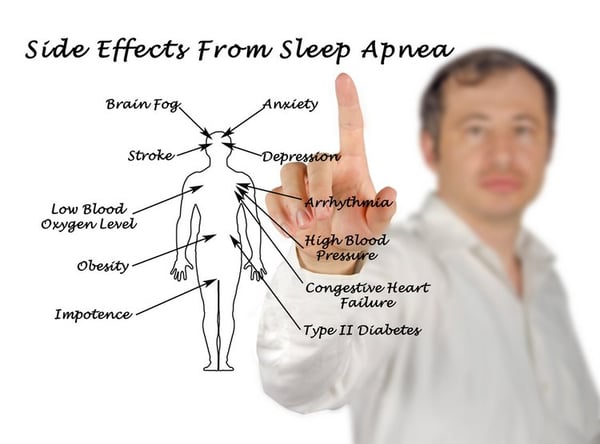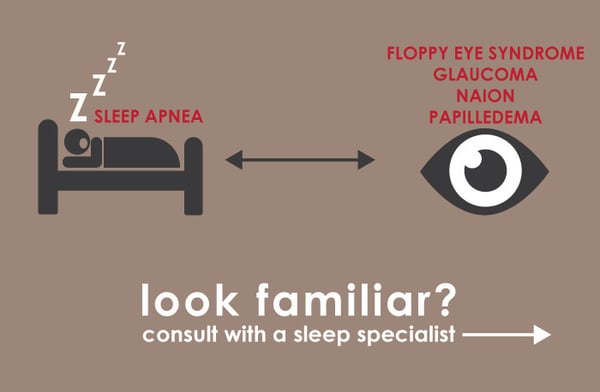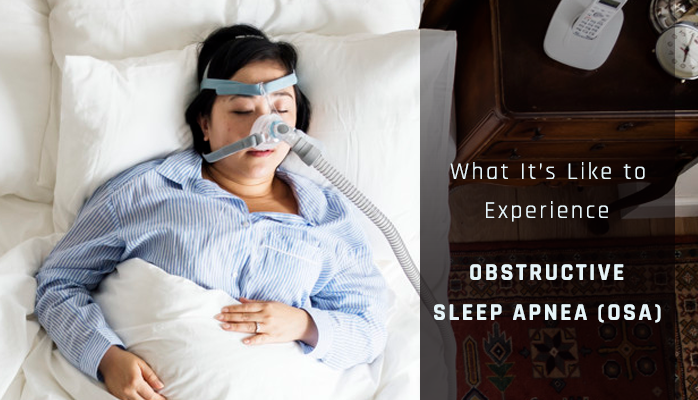What is Obstructive Sleep Apnea?
Obstructive sleep apnea (OSA) is a sleeping disorder and medical condition that causes you to repeatedly stop breathing and then rouse yourself throughout the night. OSA happens when the throat muscles in the back of your throat relax, causing the airway to narrow and your tongue to cleave to the back of your mouth, instigating snoring and a closed airway. Because you have rouse each time this happens, OSA prevents you from getting restful sleep, resulting in chronic (and potentially severe) sleep deprivation.
This process of not breathing and rousing can happen many times per hour:
- Mild OSA: 5-14 apneas per hour of sleep
- Moderate OSA: 15-30 apneas per hour of sleep
- Severe OSA: 30+ apneas per hour of sleep
Even moderate sleep apnea causes you to wake up over 100 times per night. The good news is that OSA is usually fully treated with CPAP therapy.
The bad news is that the risks are still the same for mild, moderate, and severe OSA, the only difference may be the prevalence and severity of the symptoms – that is, whether or not you are rousing 80 or 250 times per night, you are incredibly sleep deprived regardless.
What are the Dangers of Obstructive Sleep Apnea?
 Obstructive sleep apnea has many dangers and potential risks. These dangers are largely the result the chronic sleep deprivation caused by OSA, and which can be quite severe.
Obstructive sleep apnea has many dangers and potential risks. These dangers are largely the result the chronic sleep deprivation caused by OSA, and which can be quite severe.
Some of the most common dangers are:
- Shorter life expectancy
- High blood pressure
- Diabetes
- Stroke
- Heart disease
- Depression and anxiety
- Reduced cognitive performance
- Reduced stress management
- Shorter life expectancy
- Safety issues (i.e., driving tired)
OSA is a serious medical condition that usually requires medical intervention of some sort. Despite the dangers, many people live with undiagnosed OSA.
What Does it Feel Like to Experience Obstructive Sleep Apnea?
One of the reasons people do not get diagnosed or seek treatment for suspected sleep apnea is because the actual experience of sleep apnea doesn’t feel like anything.
Sleep apnea is caused by the following:
- Your throat muscles relax
- The structure of your throat collapses
- Your tongue cleaves to the back of your throat or the roof of your mouth
- Your airway is blocked, and you don’t breath (about 20 seconds)
- You partially rouse to resume breathing
Each one of these cycles is called an apnea event, and they happen many times throughout the night – anywhere from 40 to hundreds of times. These arousals keep you from sleeping, but you don’t remember rousing each time. You just wake up tired, often with a headache.
Unless you have a bed partner to hear you experience apnea events, you won’t notice anything unusual happening during sleep.
What Is Experience of OSA Like for Bed Partners?
 A bed partner can be absolutely critical in bringing to one’s attention that they have weird things happen during sleep, like:
A bed partner can be absolutely critical in bringing to one’s attention that they have weird things happen during sleep, like:
- They often stop breathing
- They suddenly gasp often
- They always snore loudly and chronically
If you have ever listened to someone with sleep apnea sleep, it can be quite unmistakable: you hear the snoring, the loud breathing, then the sudden and prolonged stopping of breathing, following by arousal and sudden inhale as if they just broke the surface of the water after holding their breath.
It can be very disruptive for the sleep partner. As the wife of a formerly untreated OSA sufferer recently put it, “I used to lie awake at night counting the seconds before he would start breathing again. It happened so often it put me to sleep.”
What Do the Side Effects of OSA Feel Like?
The side effects of OSA are not fun. Some of the common ones include:
- Irritability
- Headaches in the morning
- Extreme daytime fatigue
- Always feeling unrested
- Lower performance in most areas of life
- Depression or melancholy
- High blood pressure
- Getting sick all the time
- Erectile dysfunction and/or loss of libido
The list of sleep deprivation symptoms goes on and on, but these highlight common themes. It’s important to also note the link between obesity, OSA, and obesity, as there is a high degree of comorbidity between them (e.g., people often have OSA and obesity/diabetes).
How is OSA Treated?
If reading this far has you worried, you can relax. There is an incredibly strong track record of treating OSA with CPAP therapy, which can allow you to resume a normal, sleep-risk free life.
CPAP therapy is essentially a machine that provides continuous air pressure into your mouth and nose so that throat muscles cannot collapse, thus preventing apnea events. Virtually everyone who uses them swears by them, they are very effective, and outside of some initial discomfort most people do not have problems wearing the CPAP mask.
OSA is diagnosed via a sleep study. If you are concerned, start by reaching out to us.


